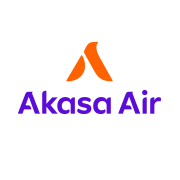The Winds of Change: Mergers, Milestones, and Modernization in India's Economy
August 9, 2024, 4:53 am
India's economic landscape is shifting. Recent developments signal a wave of consolidation, ambition, and safety enhancements across various sectors. The National Company Law Tribunal (NCLT) has greenlit Tata Steel's merger with Indian Steel & Wire Products, a move that promises to reshape the steel industry. Meanwhile, Akasa Air is setting its sights high, aiming to join the ranks of the world's top airlines by 2030. On the railways front, the introduction of the Kavach safety system aims to prevent tragedies, while the Rapid Metro in Gurgaon reports a significant revenue boost. These stories intertwine, reflecting a broader narrative of growth and innovation.
The NCLT's approval of Tata Steel's merger is a pivotal moment. This decision is not just about numbers; it’s about creating a powerhouse. Tata Steel plans to streamline operations under a unified brand. The merger is a strategic move to enhance shareholder value and operational efficiency. By consolidating its subsidiaries, Tata aims to reduce administrative burdens and drive focused growth. The "One-Tata Steel" approach is more than a slogan; it’s a blueprint for agility in a competitive market.
The Tata Group's consolidation strategy began in 2022. It aims to merge various metal and resource subsidiaries into a single entity. This includes both listed and unlisted companies. The merger aligns with the group's 5S strategy: simplification, synergy, scale, sustainability, and speed. Each element is crucial in a world where efficiency is king. The move is expected to foster stronger business synergies, ultimately benefiting consumers and shareholders alike.
In the aviation sector, Akasa Air is making waves. Celebrating its second anniversary, the airline's CEO has ambitious plans. Akasa aims to be among the top 30 global airlines by 2030. This is no small feat. Since its launch, Akasa has expanded rapidly, reaching 22 domestic and five international destinations. The airline has carried over 11 million passengers and operates more than 900 weekly flights.
Backed by significant investment, Akasa has carved out a 5% market share, surpassing established players like SpiceJet. This growth story is a testament to the airline's innovative approach and commitment to customer service. Akasa's trajectory reflects a broader trend in the aviation industry, where new entrants challenge the status quo. The competition is fierce, but Akasa's vision is clear: to soar high in a crowded sky.
Meanwhile, the Indian Railways is prioritizing safety with the introduction of the Kavach automatic train protection system. This initiative comes in response to tragic incidents that have raised concerns about rail safety. The Kavach system aims to standardize protocols for loco pilots during signal failures. By equipping 10,000 locomotives with this technology, the railways are taking a proactive stance on safety.
The government plans to deploy Kavach on 5,000 kilometers of track by March 2025. This is a significant investment in the future of rail travel. Safety is paramount, and the new guidelines will clarify speed and safety protocols. The railways are not just responding to past tragedies; they are building a safer future for millions of passengers.
In Gurgaon, the Rapid Metro is also experiencing a surge. The latest report shows a 10.49% increase in revenue for the first quarter of the 2024-25 financial year. This growth is attributed to an 8.75% rise in ridership. More people are choosing the metro, reflecting a shift in urban transportation preferences. The Rapid Metro's success is a microcosm of the broader urban mobility trend in India.
As cities grow, so does the need for efficient public transport. The Rapid Metro is meeting this demand head-on. With increased ridership comes increased revenue, allowing for further investments in infrastructure and services. This cycle of growth is essential for sustainable urban development.
These stories are interconnected. The merger of Tata Steel, the ambitions of Akasa Air, the safety measures in railways, and the success of the Rapid Metro all reflect a dynamic economy. India is at a crossroads, where traditional industries are evolving, and new players are emerging. The landscape is changing, driven by innovation and a commitment to safety and efficiency.
In conclusion, the winds of change are blowing through India's economy. Mergers, ambitious goals, and safety enhancements are shaping the future. Each development is a piece of a larger puzzle, illustrating the resilience and adaptability of the Indian market. As these sectors evolve, they will undoubtedly influence the broader economic narrative. The journey is just beginning, and the potential is limitless.
The NCLT's approval of Tata Steel's merger is a pivotal moment. This decision is not just about numbers; it’s about creating a powerhouse. Tata Steel plans to streamline operations under a unified brand. The merger is a strategic move to enhance shareholder value and operational efficiency. By consolidating its subsidiaries, Tata aims to reduce administrative burdens and drive focused growth. The "One-Tata Steel" approach is more than a slogan; it’s a blueprint for agility in a competitive market.
The Tata Group's consolidation strategy began in 2022. It aims to merge various metal and resource subsidiaries into a single entity. This includes both listed and unlisted companies. The merger aligns with the group's 5S strategy: simplification, synergy, scale, sustainability, and speed. Each element is crucial in a world where efficiency is king. The move is expected to foster stronger business synergies, ultimately benefiting consumers and shareholders alike.
In the aviation sector, Akasa Air is making waves. Celebrating its second anniversary, the airline's CEO has ambitious plans. Akasa aims to be among the top 30 global airlines by 2030. This is no small feat. Since its launch, Akasa has expanded rapidly, reaching 22 domestic and five international destinations. The airline has carried over 11 million passengers and operates more than 900 weekly flights.
Backed by significant investment, Akasa has carved out a 5% market share, surpassing established players like SpiceJet. This growth story is a testament to the airline's innovative approach and commitment to customer service. Akasa's trajectory reflects a broader trend in the aviation industry, where new entrants challenge the status quo. The competition is fierce, but Akasa's vision is clear: to soar high in a crowded sky.
Meanwhile, the Indian Railways is prioritizing safety with the introduction of the Kavach automatic train protection system. This initiative comes in response to tragic incidents that have raised concerns about rail safety. The Kavach system aims to standardize protocols for loco pilots during signal failures. By equipping 10,000 locomotives with this technology, the railways are taking a proactive stance on safety.
The government plans to deploy Kavach on 5,000 kilometers of track by March 2025. This is a significant investment in the future of rail travel. Safety is paramount, and the new guidelines will clarify speed and safety protocols. The railways are not just responding to past tragedies; they are building a safer future for millions of passengers.
In Gurgaon, the Rapid Metro is also experiencing a surge. The latest report shows a 10.49% increase in revenue for the first quarter of the 2024-25 financial year. This growth is attributed to an 8.75% rise in ridership. More people are choosing the metro, reflecting a shift in urban transportation preferences. The Rapid Metro's success is a microcosm of the broader urban mobility trend in India.
As cities grow, so does the need for efficient public transport. The Rapid Metro is meeting this demand head-on. With increased ridership comes increased revenue, allowing for further investments in infrastructure and services. This cycle of growth is essential for sustainable urban development.
These stories are interconnected. The merger of Tata Steel, the ambitions of Akasa Air, the safety measures in railways, and the success of the Rapid Metro all reflect a dynamic economy. India is at a crossroads, where traditional industries are evolving, and new players are emerging. The landscape is changing, driven by innovation and a commitment to safety and efficiency.
In conclusion, the winds of change are blowing through India's economy. Mergers, ambitious goals, and safety enhancements are shaping the future. Each development is a piece of a larger puzzle, illustrating the resilience and adaptability of the Indian market. As these sectors evolve, they will undoubtedly influence the broader economic narrative. The journey is just beginning, and the potential is limitless.


